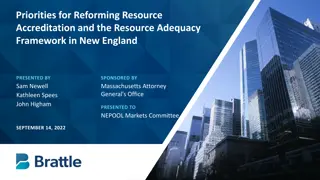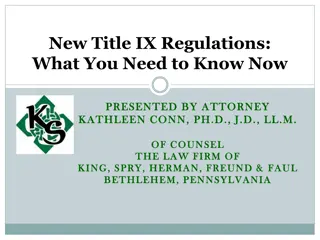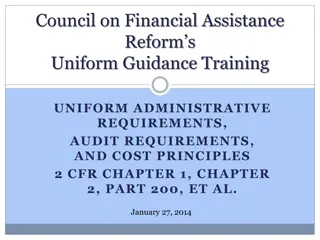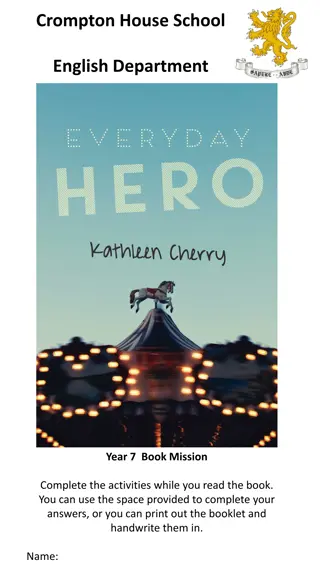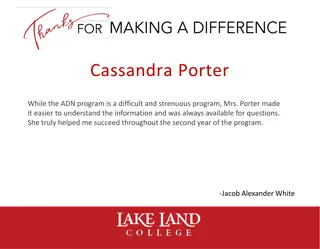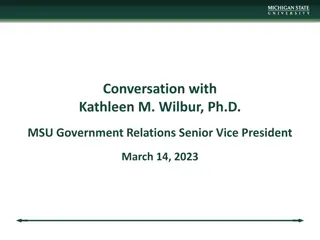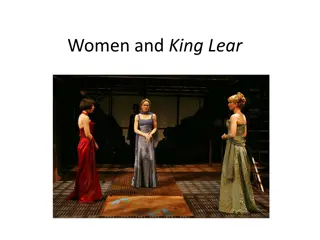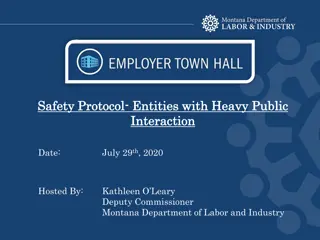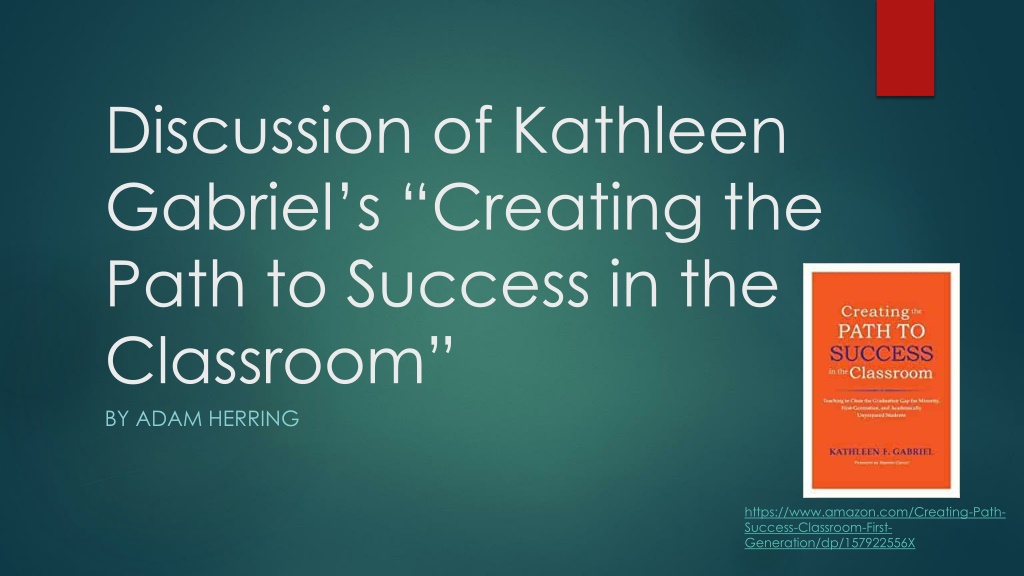
Creating the Path to Success in the Classroom - Book Summary
Explore Kathleen Gabriel's book "Creating the Path to Success in the Classroom" by Adam Herring. Delve into the author's background, book summary, responses, and future directions outlined in this research-based guide focusing on strategies for success in higher education, specifically for minority, first-generation, and academically unprepared students.
Download Presentation

Please find below an Image/Link to download the presentation.
The content on the website is provided AS IS for your information and personal use only. It may not be sold, licensed, or shared on other websites without obtaining consent from the author. Download presentation by click this link. If you encounter any issues during the download, it is possible that the publisher has removed the file from their server.
E N D
Presentation Transcript
Discussion of Kathleen Gabriel s Creating the Path to Success in the Classroom BY ADAM HERRING https://www.amazon.com/Creating-Path- Success-Classroom-First- Generation/dp/157922556X
Overview Author bio Book summary My responses to the book Who should read this book Future directions References
Author bio: Kathleen Gabriel Associate Prof. in School of Education, California State University Chico Educational consultant Author of two other books Starting Behind...Finishing Ahead: A Blueprint for Academic Support for At-Risk College Students. (2005) Teaching Unprepared Students: Strategies for Success and Retention in Higher Education. (2008) https://www.csuchico.edu/soe/about/ faculty/faculty/kathleen-gabriel.shtml
Book Summary: Birds Eye View Research-based how-to guide for faculty by a fellow faculty member Interweaves theory and practice for a given topic. Recommends specific activities for faculty to implement Focuses on needs of minority, first-generation, and academically unprepared students
Book Summary: Chapter Content 1. Main college outcomes: retention, persistence, graduation 2. Role of class climate 3. Establishing course policies and procedures 4. Effect of students motivation, attitudes 5-7. Activities that lead to success Interactive lectures, reading and writing assignments, class discussions 8. Role of resilience, positive habits, persistence
Book Summary: Outcomes Main focus: Improve persistence, retention, graduation Other outcomes: job security personal expression develop self-regulation and evaluation skills Develop resilience power to reshape society, increasing opportunity, increasing equality, increasing justice, and increasing freedom for everyone (p. xiv, Stephen Carroll)
Book Summary: Environment Focuses heavily on faculty role It is that time students spend with us, their professors, beginning of the first day of class and continuing throughout the semester, that can become the most significant part of their educational experience (p. 13). It is a widely accepted notion that the actions of the faculty, especially in the classroom, are key to institutional effort to enhance student retention (p. 8, citing Tinto, 2006-07). Provides specific activities and ideas to implement in classroom
Book Summary: Inputs Focus on minority, first-generation, academically unprepared students. Tend to suffer from lower self-efficacy, self-esteem, sense of belonging (p. 44) Pre-college characteristics less important than engagement (p. 30) Tend to not write proficiently (p. 95)
My Reflection: Highlights Sound basis in research Suggestions attainable by most faculty Wide variety of options to pick from. Helpful appendices
My reflection: Areas to improve Who are academically unprepared students? Co-curricular aspects of environment missing (clubs, activities, advisors, etc.)
Who should read this book Clearly written for (teaching) faculty All faculty would benefit from applying ideas Deans and department heads Those who perform faculty professional development Staff who interact with minority, first-generation, or academically at- risk students
Future Directions Do these activities affect all the subpopulations specified in the same way? How does intersectionality of identity provide nuances to effectiveness of methods? What quantitative evidence is there for the success of these methods?
References Gabriel, K.F. (2018). Creating the path to success in the classroom: Teaching to close the graduation gap for minority, first-generation, and academically unprepared students. Sterling, VA: Stylus. Kathleen F. Gabriel, EdD. (n.d.). Retrieved April 25, 2020, from https://www.csuchico.edu/soe/about/faculty/faculty/kathleen- gabriel.shtml



